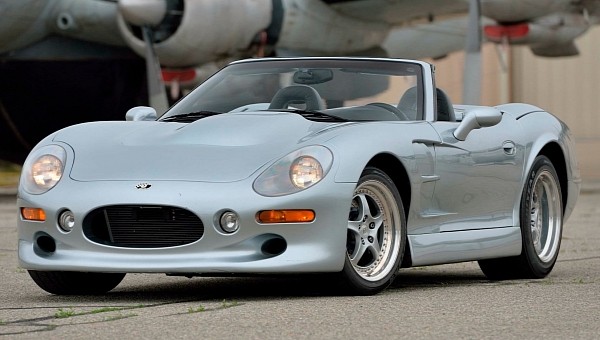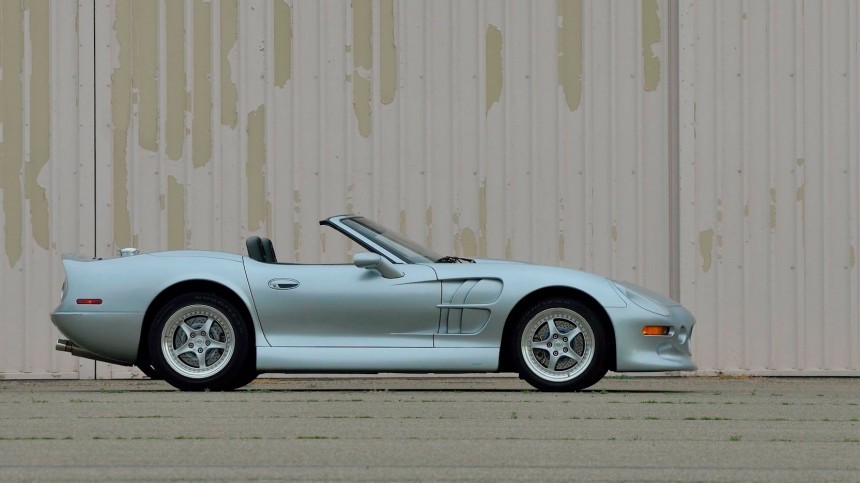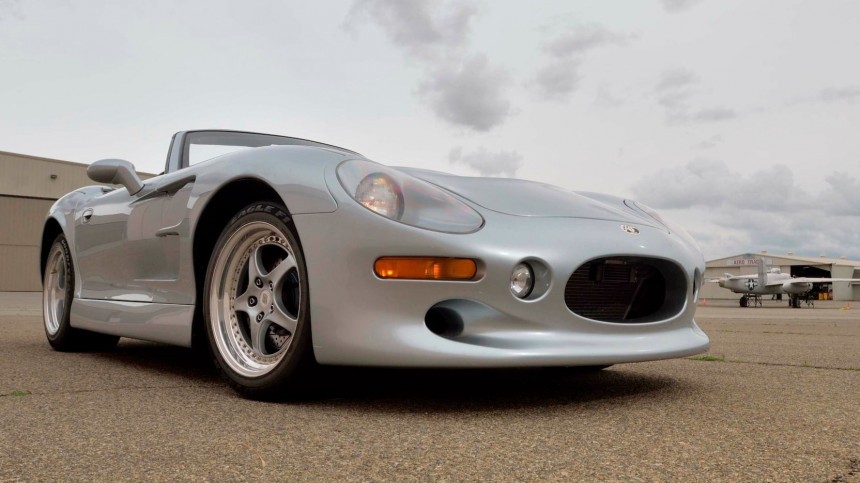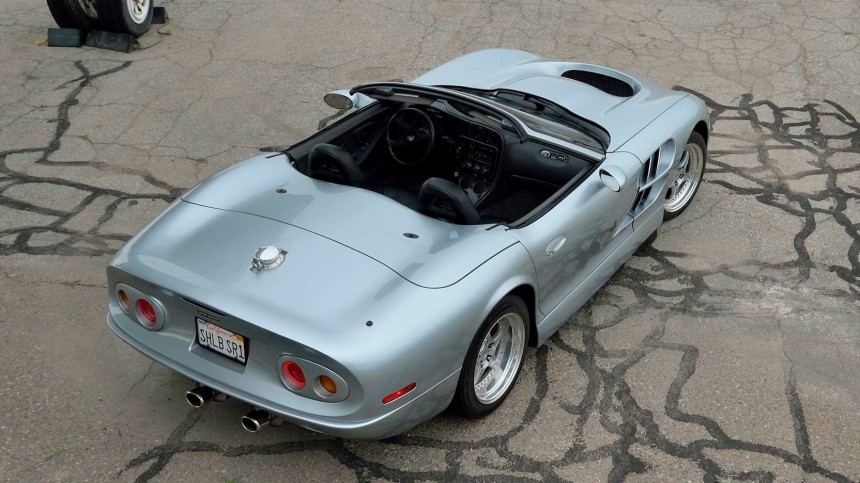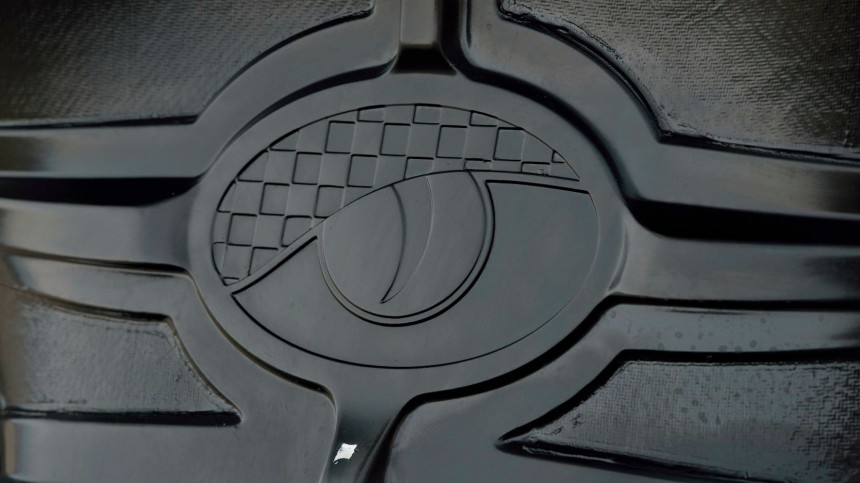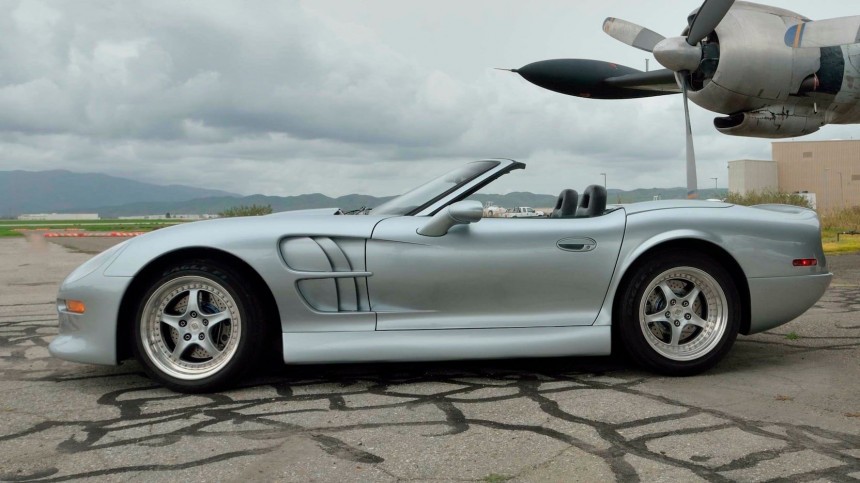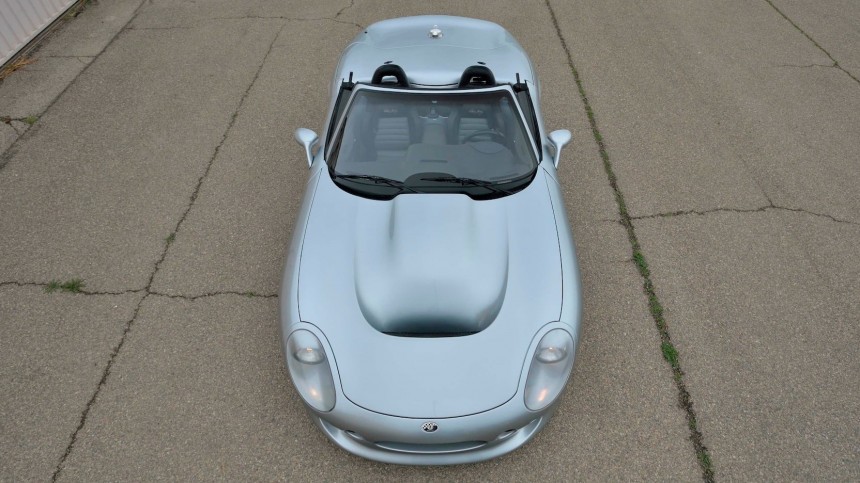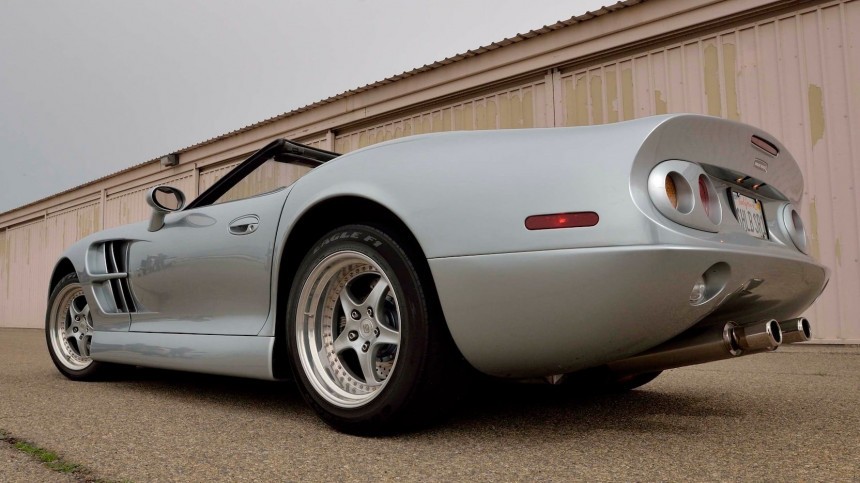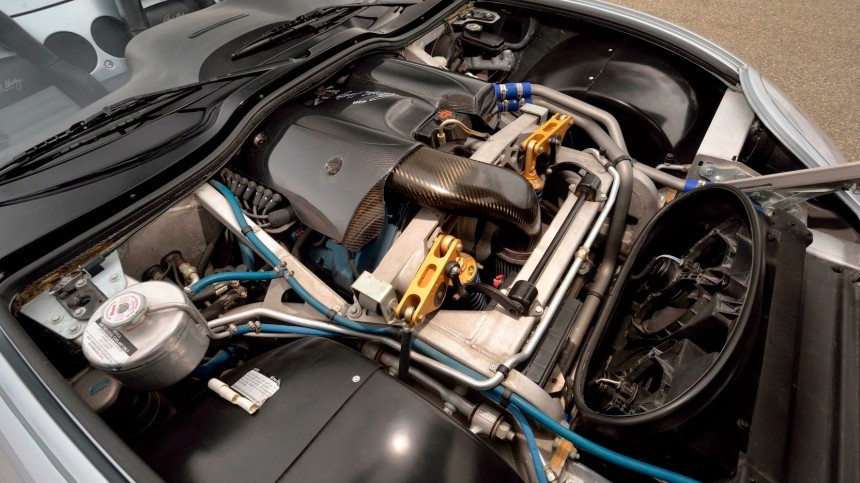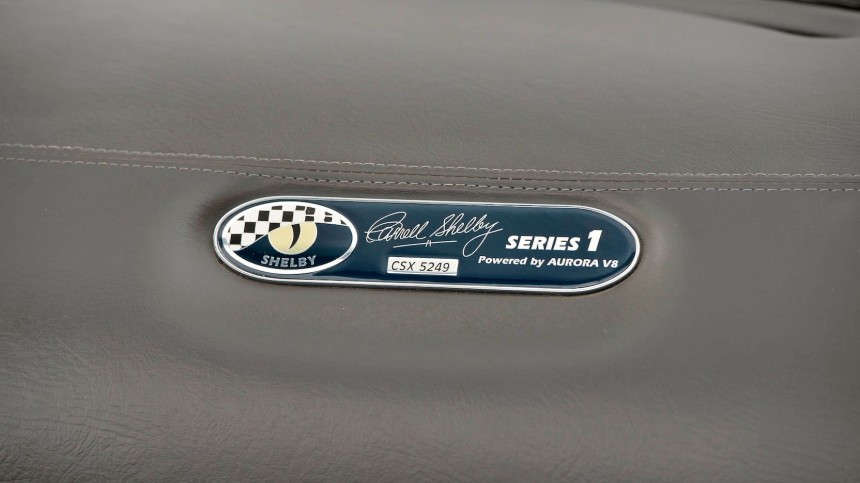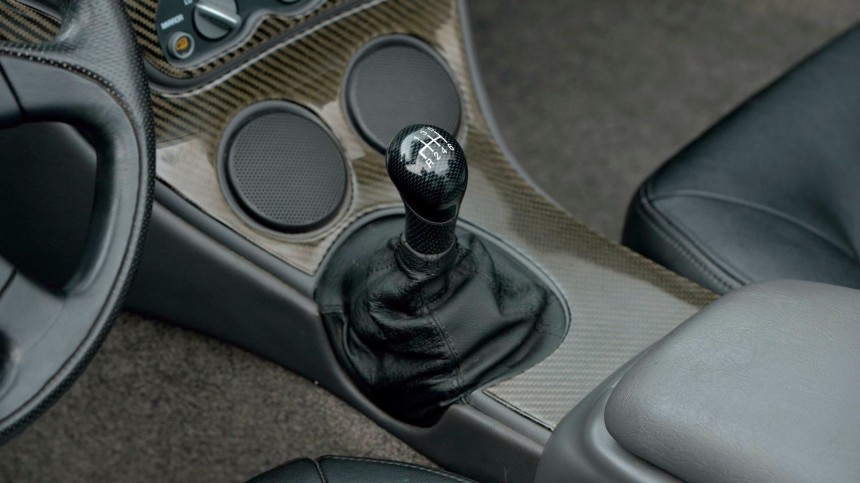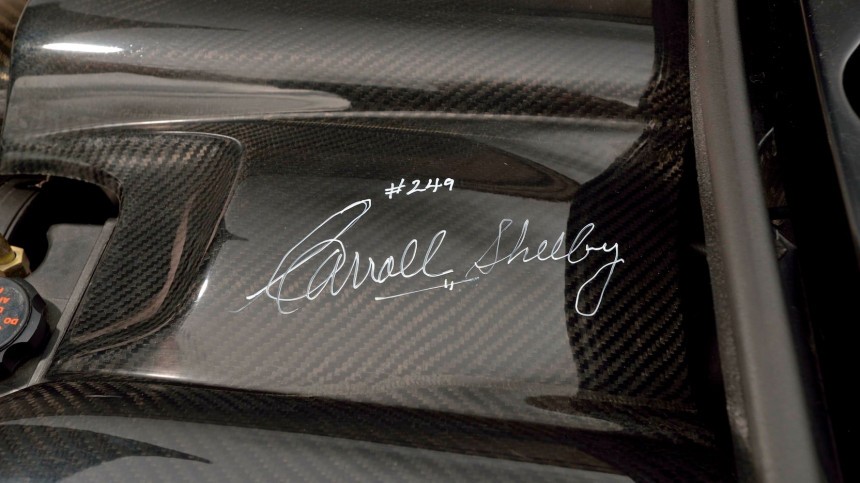How many cars did Carroll Shelby make in his half-century career? The numbers will fade away in history, but the surprising answer contrasts the aura of the man who made his name and fame in the crankshaft universe.
As it turns out, fewer than 300 would be the most appropriate answer. Before you start thinking about what size should the nails for my crucifixion be, allow an addendum. Carroll modified, tuned, bettered, and made legends of many other manufacturer vehicles – and all for the better. But a proper Shelby car would drop onto Planet Piston only at the turn of the millennia.
"Proper Shelby car" implies an automobile designed and assembled from a blank canvas without the hinders and drawbacks of already-made fabrications. Shelby Series 1 is the definitive answer to the confusing question about the Carroll Shelby-made automobile, and 249 would be the most cited production number.
Again, as with pretty much everything regarding the famous racer and tuner, the exact figure is hard to determine, given that his greatest ambition – a car made entirely after his own ideas, dreams, concepts, desires, specifications, and standards – was an absolute nightmare from nearly all aspects.
In the '90s, Shelby was more focused on staying alive than on other matters, having undergone a heart swap in 1990 and a kidney transplant six years later. His health issues took a heavy toll on his business (as it had done to his racing prowess and career), and carmaking didn't go "'60s smoothly."
Nonetheless, Carroll did what he'd always done – look at the matter straight in the face and deal with it. He wanted to build his own car, and nothing would stop him. And nothing did, despite surmounting an incommensurable number of obstacles in the process.
Around 1994, he struck a deal with GM (thus closing the Big Three circle of collaboration) and shook hands over an Oldsmobile engine. A 370-hp (375-PS) four-liter V8 (that powered Indy Racing League machines) would be the heart of a "Made by Carroll Shelby" sportscar.
Except the engine wasn't emissions-compliant, so GM detuned it badly – to 250 hp (253 PS). After numerous tweaks and countless fine-tuning attempts, the Shelby engineers managed to up the horsepower headcount to 320 (324 PS).
It was catastrophically disappointing – Shelby had done far better three decades earlier – but it was the best thing available. The team had reached the absolute upper limit despite many edge-driving challenges.
For example, GM supplied the powerplant, but not the Engine Management Unit computer codes. Why that happened is a history on its own, but the short version is this: the Corvette.
GM was going through a cosmic-sized shift in paradigm, philosophy, and – critically – management. Shelby reached an agreement with the man in charge of Oldsmobile, a fellow by the name of John Rock. Unfortunately, Rock left in 1996, and his replacement wasn't as eager to support a Corvette-threatening project.
Because that's precisely what the Shelby Series 1 car would have been – a sportscar to outperform everything America had built until that moment. Bearing the legendary Shelby badge would have made it even more desirable.
There was a catch in the Oldsmobile-Shelby deal: the tuner would get his engines, but the carmaker would get enormous publicity, something the brand was in desperate need of, in lack of something better (like, let's say, great cars of its own).
In the mid-to-late '90s, Oldsmobile was slowly sinking, and a Shelby performance machine powered by an Olds V8 would have been the perfect PR tool to revive the brand. Or so GM moguls thought, until they changed their minds completely.
Having (partly) solved the engine matters, Shelby still had some details to sort out – like the rest of the car, for starters. He had brilliant engineers in his team, but was seriously outgunned in the budget department. And his dream car – being a greenfield project – needed tidal waves of cash to make it to the prototype phase.
The frame and body designs were outstanding – aluminum, carbon fiber, and fiberglass solved the weight and strength equation. On paper, because in metal, things proved much more tedious.
Despite benefitting from the space-age know-how of his engineers (one of them had previously worked on a Northrop Grumman project called YF-22, currently known as the F-22 Raptor), Shelby needed someone to actually fabricate the parts.
His company (Shelby American) was acquired by Venture Industries – a large company with solid expertise in automobile body manufacturing. This allowed the Shelby Series 1 to take shape (both figurately and literally), but the car was very far from completion.
Design flaws – inherent to any ground-up project – were anchoring the sportscar to postponed promises and no tangible results. But Shelby refused to give up and got over an indiscriminate number of delays to see his car on the track.
Even after the first working prototypes were put together, things didn't turn the right way. Because so many issues had to be remedied, the car's price skyrocketed. From the initial $100,000 claimed for the final street-legal version, the cost built up to over $180,000.
And that's not all. Since the GM engine wasn't Shelby-level performant, the age-old solution popped on the drawing boards: a supercharger. Masterfully set up, the force-fed V8 would turn out a much more respectable 450 hp (456 PS) – for the meager price of $35,000 extra! Or, as a cheaper alternative, a $27,000 kit could be purchased separately.
All this for a car that didn't even yet exist. And when it finally came out, it nearly died at birth. In July of 1998, the car was ready for a test. Motor Trend Magazine had the privilege to be the first to try it out, and they liked the car.
Little did the journalists know that the test almost didn't happen. Several days before the official reveal, an aluminum casting supporting the rear suspension broke. Four times in two days! The test was planned for July 29, 1998. The night before, the mechanics from Shelby worked miracles and welded the assembly in place.
Finally, after years of struggle, the car was real. Somehow, Carroll Shelby pulled it off one more time – perhaps the most outstanding achievement of his life. Battling not only corporate bureaucracy, financial depressions, and technical black holes – all the while hanging on for dear life – the self-made do-or-die had done it.
The Shelby Series 1 is a 1.2-ton dream that can hit 60 mph (97 kph) in about 4.4 seconds, with the regular V8 and its 320 hp (324 PS) and 290 lb-ft (390 Nm). Since this is a track car with a road pass, the quarter mile was a 12.8-second affair at a thumbs-up speed of 109.9 mph (176,9 kph). That was the score recorded during the 1998 Motor Trend test run.
Because the car was so compact, at 96.0x169x76.5x47 inches – wheelbase-length-width-height – (2,438 mm/4,292 mm/1,943 mm/1,194 mm), the engine sits front-mid, and the rear transaxle sends all the power to the back.
In the supercharged version, the Series 1 gained a different level of respect from gearheaded commentators: 3.2 seconds for the 0-60 mph (0-97 kph). Naturally, the 440-yard sprint was over in a second and a half faster when compared to the naturally aspirated car: 11.35 seconds at 124 mph (200 kph).
There is a bit (or a lot, depending on your yardstick) of Shelb-ystery clouding the high-performance version. Several sources cite the 600-hp (608 PS) output, while others go with the more conservative figure of 450 (456 PS).
A parenthesis is needed here to clarify and demystify various (and probably related) power-related rumors that roam about the vast plains of the all-mighty internet.
Please discard that 600-hp (608-PS) figure as false. Because the inconsistency repeatedly appeared during the research for this article, this author retorted to the only sensible mitigation and asked the ultimate authority.
Shelby American confirmed for autoevolution, through the voice of President Gary Patterson, that the real power for the top-performance automobile was 459 crank horsepower. Accounting for "a 12% loss for the power train, the flywheel hp, which is the standard for advertisements on sports cars with front engine and rear-wheel drive", the car unleashed 404 hp (410 PS) on the ground.
The very first car assembled – chassis number 1 – was Carroll's personal Series 1, and it was a power-yielding one. The Vortech-backed forced induction delivered the performance to put quarter-mile top players in their corners. Less than 50 Shelby Series 1s have the supercharger – either factory-installed or retrofitted by Shelby as an after-sales upgrade.
To spice things up further, note that there was also a middle-of-the-road spec, with 370 hp (375 PS) on tap, naturally aspirated. This option was somewhat exotic – if not in specs, then in customer preference, as very few examples in this version exist.
Regardless of engine output, all 249 Series 1 had the same six-speed manual transmission. In good Shelby tradition, the gearbox was a modified De Tomaso Pantera five-speed from ZF. The math is correct; the engineers sprinkled Shelby wizardry inside and found an extra gear. Consequently, a "6+Reverse" lever found its place inside the cockpit.
Weight was magically spread across the load-bearing points, with a 50/50 ratio. Again, unanimous agreement is almost impossible, as with so many other things "Carroll Shelby." There are versions of a 49/51 front/rear mass distribution.
But, given how some early production models were "gravitationally challenged" (at 3,000 lb/1,360 kg, as opposed to 2,650 lb/1,202 kg for the last cars assembled), this controversy might hold some water.
Because of fabrication defects, the early-cars body panels weren't correctly aligned. Venture Industries solved the issue by cladding them with filler, adding weight, but eliminating errors. 50/50 or not, the car sticks to the ground like it was meant to do so (and it was!): it pulled 1G of lateral acceleration during tests before losing its heading.
The lack of interior space was one immediately apparent inconvenience. Still, regarding track performance, the Series 1 was highly praised for its outstanding handling. The race-derived dual wishbone suspensions have coil-over remote-reservoir dampers (mounted inboard and actuated by pushrod rocker arms).
With all its faults and mishaps, the Series 1 is one wonderful machine with a splendid – although foggy at times – history, and collectors would appreciate one in the garage. As it happens, the last off the assembly line, chassis 249/249, is for sale: 4,645 miles (7,475 km), Centennial Silver exterior over a two-tone, silver-and-black interior.
This spartan racer has air conditioning, power windows, assisted steering, and power disc brakes (drilled and slotted all around). The price will be settled during the Glendale auction this spring (March 28 – April 1). For reference, the most expensive example ever sold snagged $313,000 – but that is the Series 1 number one, the car that Carroll himself owned until 2012.
"Proper Shelby car" implies an automobile designed and assembled from a blank canvas without the hinders and drawbacks of already-made fabrications. Shelby Series 1 is the definitive answer to the confusing question about the Carroll Shelby-made automobile, and 249 would be the most cited production number.
Again, as with pretty much everything regarding the famous racer and tuner, the exact figure is hard to determine, given that his greatest ambition – a car made entirely after his own ideas, dreams, concepts, desires, specifications, and standards – was an absolute nightmare from nearly all aspects.
In the '90s, Shelby was more focused on staying alive than on other matters, having undergone a heart swap in 1990 and a kidney transplant six years later. His health issues took a heavy toll on his business (as it had done to his racing prowess and career), and carmaking didn't go "'60s smoothly."
Nonetheless, Carroll did what he'd always done – look at the matter straight in the face and deal with it. He wanted to build his own car, and nothing would stop him. And nothing did, despite surmounting an incommensurable number of obstacles in the process.
Around 1994, he struck a deal with GM (thus closing the Big Three circle of collaboration) and shook hands over an Oldsmobile engine. A 370-hp (375-PS) four-liter V8 (that powered Indy Racing League machines) would be the heart of a "Made by Carroll Shelby" sportscar.
Except the engine wasn't emissions-compliant, so GM detuned it badly – to 250 hp (253 PS). After numerous tweaks and countless fine-tuning attempts, the Shelby engineers managed to up the horsepower headcount to 320 (324 PS).
It was catastrophically disappointing – Shelby had done far better three decades earlier – but it was the best thing available. The team had reached the absolute upper limit despite many edge-driving challenges.
For example, GM supplied the powerplant, but not the Engine Management Unit computer codes. Why that happened is a history on its own, but the short version is this: the Corvette.
Because that's precisely what the Shelby Series 1 car would have been – a sportscar to outperform everything America had built until that moment. Bearing the legendary Shelby badge would have made it even more desirable.
There was a catch in the Oldsmobile-Shelby deal: the tuner would get his engines, but the carmaker would get enormous publicity, something the brand was in desperate need of, in lack of something better (like, let's say, great cars of its own).
Having (partly) solved the engine matters, Shelby still had some details to sort out – like the rest of the car, for starters. He had brilliant engineers in his team, but was seriously outgunned in the budget department. And his dream car – being a greenfield project – needed tidal waves of cash to make it to the prototype phase.
The frame and body designs were outstanding – aluminum, carbon fiber, and fiberglass solved the weight and strength equation. On paper, because in metal, things proved much more tedious.
His company (Shelby American) was acquired by Venture Industries – a large company with solid expertise in automobile body manufacturing. This allowed the Shelby Series 1 to take shape (both figurately and literally), but the car was very far from completion.
Design flaws – inherent to any ground-up project – were anchoring the sportscar to postponed promises and no tangible results. But Shelby refused to give up and got over an indiscriminate number of delays to see his car on the track.
And that's not all. Since the GM engine wasn't Shelby-level performant, the age-old solution popped on the drawing boards: a supercharger. Masterfully set up, the force-fed V8 would turn out a much more respectable 450 hp (456 PS) – for the meager price of $35,000 extra! Or, as a cheaper alternative, a $27,000 kit could be purchased separately.
All this for a car that didn't even yet exist. And when it finally came out, it nearly died at birth. In July of 1998, the car was ready for a test. Motor Trend Magazine had the privilege to be the first to try it out, and they liked the car.
Finally, after years of struggle, the car was real. Somehow, Carroll Shelby pulled it off one more time – perhaps the most outstanding achievement of his life. Battling not only corporate bureaucracy, financial depressions, and technical black holes – all the while hanging on for dear life – the self-made do-or-die had done it.
The Shelby Series 1 is a 1.2-ton dream that can hit 60 mph (97 kph) in about 4.4 seconds, with the regular V8 and its 320 hp (324 PS) and 290 lb-ft (390 Nm). Since this is a track car with a road pass, the quarter mile was a 12.8-second affair at a thumbs-up speed of 109.9 mph (176,9 kph). That was the score recorded during the 1998 Motor Trend test run.
In the supercharged version, the Series 1 gained a different level of respect from gearheaded commentators: 3.2 seconds for the 0-60 mph (0-97 kph). Naturally, the 440-yard sprint was over in a second and a half faster when compared to the naturally aspirated car: 11.35 seconds at 124 mph (200 kph).
There is a bit (or a lot, depending on your yardstick) of Shelb-ystery clouding the high-performance version. Several sources cite the 600-hp (608 PS) output, while others go with the more conservative figure of 450 (456 PS).
Please discard that 600-hp (608-PS) figure as false. Because the inconsistency repeatedly appeared during the research for this article, this author retorted to the only sensible mitigation and asked the ultimate authority.
Shelby American confirmed for autoevolution, through the voice of President Gary Patterson, that the real power for the top-performance automobile was 459 crank horsepower. Accounting for "a 12% loss for the power train, the flywheel hp, which is the standard for advertisements on sports cars with front engine and rear-wheel drive", the car unleashed 404 hp (410 PS) on the ground.
To spice things up further, note that there was also a middle-of-the-road spec, with 370 hp (375 PS) on tap, naturally aspirated. This option was somewhat exotic – if not in specs, then in customer preference, as very few examples in this version exist.
Regardless of engine output, all 249 Series 1 had the same six-speed manual transmission. In good Shelby tradition, the gearbox was a modified De Tomaso Pantera five-speed from ZF. The math is correct; the engineers sprinkled Shelby wizardry inside and found an extra gear. Consequently, a "6+Reverse" lever found its place inside the cockpit.
But, given how some early production models were "gravitationally challenged" (at 3,000 lb/1,360 kg, as opposed to 2,650 lb/1,202 kg for the last cars assembled), this controversy might hold some water.
Because of fabrication defects, the early-cars body panels weren't correctly aligned. Venture Industries solved the issue by cladding them with filler, adding weight, but eliminating errors. 50/50 or not, the car sticks to the ground like it was meant to do so (and it was!): it pulled 1G of lateral acceleration during tests before losing its heading.
With all its faults and mishaps, the Series 1 is one wonderful machine with a splendid – although foggy at times – history, and collectors would appreciate one in the garage. As it happens, the last off the assembly line, chassis 249/249, is for sale: 4,645 miles (7,475 km), Centennial Silver exterior over a two-tone, silver-and-black interior.
This spartan racer has air conditioning, power windows, assisted steering, and power disc brakes (drilled and slotted all around). The price will be settled during the Glendale auction this spring (March 28 – April 1). For reference, the most expensive example ever sold snagged $313,000 – but that is the Series 1 number one, the car that Carroll himself owned until 2012.
